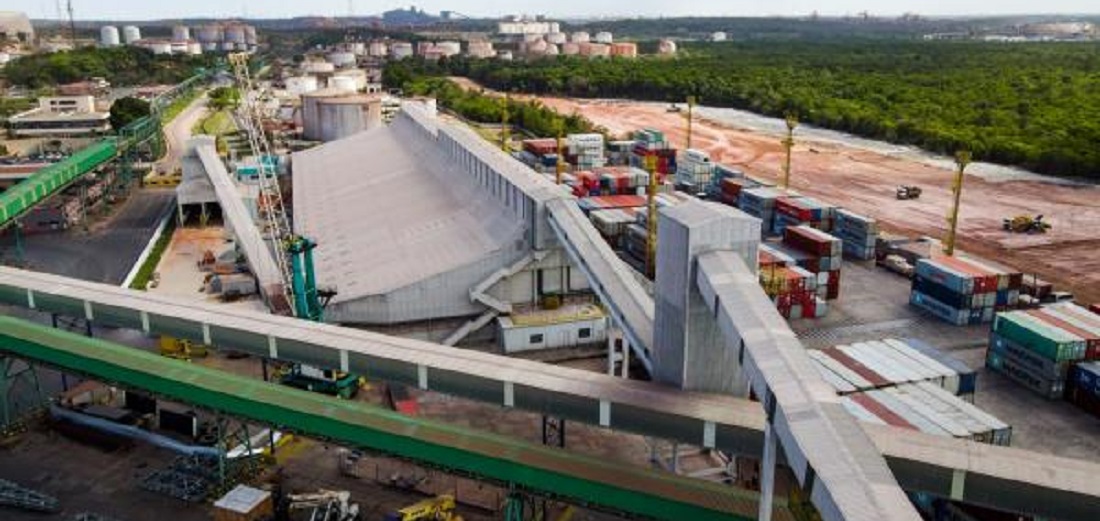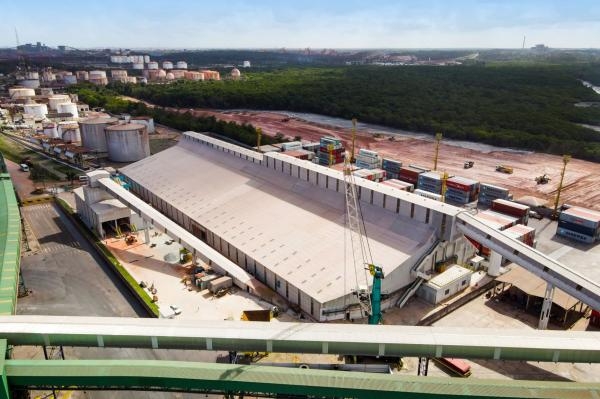
New fertilizer terminal begins operations at Itaqui
Mar, 15, 2021 Posted by Ruth HollardWeek 202111
This March, a new terminal at Companhia Operadora Portuária do Itaqui (COPI) initiated commercial operations at Port of Itaqui. Productivity is expected to increase by 300% at berth 101 through the use of mobile cranes, a grain hopper, and conveyor belts that connect the warehouse to the berth. The annual capacity is now 3.5 million tons of fertilizers (about 1,250 tons/hour).
The project has static storage for 70,000 tons of bulk cargo divided into 10 boxes. And for dispatch, a system with a capacity of up to 700 tons/hour makes it possible to send cargo in trucks directly to buyers, even on rainy days. The infrastructure also allows operations in a customs area for import bulk through customs warehousing, in addition to the usual operations in the consumption model and direct unloading with advance dispatch.
The company’s total investment in the Centro Norte fertilizer corridor is estimated at R$ 260 million, of which R$ 110 million has already been invested in the first stage of the project, and an additional R$ 150 million will be used for the terminal’s railway in Port of Itaqui and the future multimodal terminal dedicated to transshipment and inland logistics from Palmeirante, the central region of the state of Tocantins.
First tests
Commissioning tests began soon after the conclusion of the works, in the last quarter of last year, and since then, approximately 50,000 tons of fertilizers have been unloaded. The last commissioning was carried out in February of this year, with the MV Bulk Trader, which unloaded around 19,000 tons of chloride (KCL) in Itaqui, of which 10,000 tons were directed to the new terminal. With the mechanized unloading of berth 101, this type of operation – which would take approximately 63 hours – was completed in 28 hours.
This simultaneous conventional and mechanized unloading operation was carried out with an average productivity level of close to 1,000 tons/hour. With this index, the fertilizer-unloading operations at the Port of Itaqui offer better conditions for chartering due to a greater turnover in anchored vessel calls, which directly impacts the quality of the products. The shorter the anchoring time, the lower rate for compacting the load.
Next step
The second stage of the project foresees the integration of the fertilizer import logistics chain from the Port of Itaqui to the interior of Brazil by railroad, beginning in the first 6 months of 2022. A daily offer of up to 40 railway cars (3,700 tons) is foreseen for the transshipment terminal in Palmeirante.
The new system will guarantee the market a constant railway flow with competitive values. Considering the differentials of privileged geographic location, rail connection, and productivity, the company estimates that the new logistics corridor will be the channel serving the growth of the country’s north-central demand for fertilizers in the coming years.
-
Ports and Terminals
Oct, 20, 2021
0
China’s strategic network of global ports
-
Coffee
Feb, 11, 2020
0
Brazil registers record coffee exports in 2019
-
Ports and Terminals
Oct, 20, 2022
0
Cargo clearing at Port of Santos starts to catch up to normal pace over eased protest
-
Fruit
Jul, 07, 2023
0
Chile’s main market for frozen blueberries is North America



